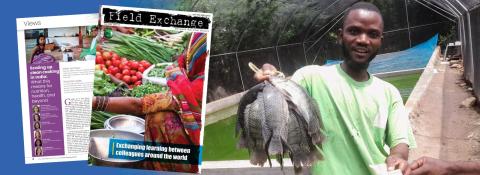Children with disabilities lack access to nutrition, health, and other services
This is a summary of the following paper: Rice I, Opondo C, Nyesigomwe L et al (2024) Children with disabilities lack access to nutrition, health and WASH services: A secondary data analysis. Maternal & Child Nutrition, e13642. https://doi.org/10.1111/mcn.13642
Poor diets, inadequate access to nutrition and health services (NaHS), and poor water, sanitation, and hygiene (WASH) all increase the risk of malnutrition and infection, especially for individuals with disabilities. The authors explored access to NaHS, household WASH, and dietary adequacy among households with and without children with disabilities, in Uganda. The study used cross-sectional secondary data from a survey conducted in 2021 and followed the PECO framework (STROBE, 2024) reporting guidelines. Adjusted logistic regression was used to explore associations between disabilities, access to NaHS, WASH, and dietary adequacy.
Of the 6,924 households included in the final analysis, half of households with children with disabilities reported not having access to all the services they needed. Deworming and vaccination were reported as both the most important and most difficult-to-access services. After adjusting for confounders, households with children with disabilities reported 30% reduced access to services on average, when compared to households without disabilities present (OR = 0.70; 95% CI 0.55–0.89, p = 0.003). Interestingly, improved WASH adequacy was strongly associated with improved access to services, including for households with children with disabilities.
Households with children with disabilities experienced a higher prevalence of illnesses, including diarrhoea and skin infections.
The proportion of malnourished children (mid-upper arm circumference <12.5cm) was higher among households with children with disabilities than households without (6.3% vs. 2.4%, p < 0.001). Only 61% of children aged over two years with disabilities reportedly ate three meals a day – and just 14% had an adequate diet.
“This suggests that about a third of children do not have access to an adequate quantity of food, while nearly three quarters do not have access to an adequately diverse diet, with implications for undernutrition, particularly micronutrient deficiencies.”
The study found that households with children have insufficient access to essential NaHS, especially those households with children with disabilities. There are concerning gaps in access to NaHS services in Uganda and households of children with disabilities reported worse access, particularly for those with low WASH adequacy.
Surveys were conducted by professional surveyors, reducing the risk of information bias, and the sample size was large with limited missing data. However, the cross-sectional secondary data used in the study is inherently limited and the sample of three districts may not be representative of Uganda as a whole. It was also not possible to adjust for individual confounders or analyse alongside other information as the data was collected at household (and not individual) level.
Nevertheless, the findings clearly indicate that few children are receiving an adequately diverse diet, putting them at risk of malnutrition, including micronutrient deficiencies. Gaps in these essential services exacerbate inequalities and have implications for the nutrition and health outcomes of children, families, and communities. To better address the need for access to essential NaHS for families in Uganda, it remains vital that these services are inclusive, accessible, and comprehensive.
References
STROBE (2024) What is STROBE? strobe-statement.org


